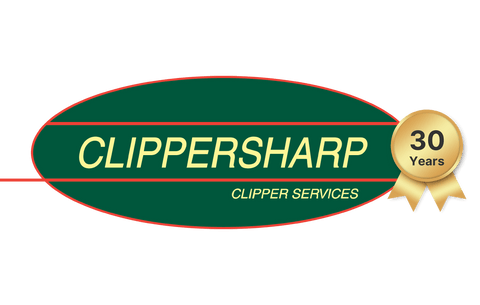A very common question we are asked is how to clip a grey successfully without leaving lines.
Greys, particularly if pink skinned, can be tricky to get a good clipped finish. There are a few tips that will help but it also does come down to practice and a consistent pressure applied when clipping.
Preparation is key, and it is essential to wash and brush the coat well, so that as much grease is removed. If there is a build up of grease, this will hinder blades being able to move freely through the hair and will show more teeth lines than from a finish you will get from a clean coat.
Clipping damp hair is also not recommended, so make sure the coat is very clean and dry. Spraying a Coat Sheen, in preparation can also help the blades guide through.
Check out your clippers and ensure blades are sharp, and the tension is adjusted correctly and as described. Each manufacturer has a different means of tensioning, so this really does need to be checked for each type of clipper.
We always recommend using medium blades to minimise lines. With pink skins, there is more chance of the skin becoming irritated if clipped closer with fine blades and the finer you go, the more chance of getting a finish that is less than perfect, unless you are very experienced and have had lots of practice.
If you are clipping ahead of an important competition or event, then allow several days for the coat to settle, just in case there are marks.
Once you have started clipping, try to clip in a smooth, consistent rhythm, overlapping each clip by about 2cm. Have a helper handy to help with keeping the skin stretched and flat, this is especially helpful under elbows, and between front legs. For the neck area, turn the horse’s head in the opposite direction to give a nice flat neck area to work on.
If you change to smaller clippers for the head and sensitive areas, check the blade length and grade to ensure you are using the same grade as you have been using on the body. If you use a close or fine trimmer blade it will mark for quite some time. The head area does take longer to grow back and shows marks very easily. We tend to use a large clipper on as much as the head as possible and down the front, and then switch to a trimmer for the fiddly bits and around the eyes and ears if needed.
If you are continuing to get lines, then you can disguise them by clipping at a slightly different angle to take the edges off. It normally works when clipping on a bit of a diagonal over the straight lines.
Other ways of getting more lines than normal are by pushing the clipper through the hair too quickly, rather than letting the clipper do the job. If you clip too quickly the blades can’t always cut the hair so efficiently, thereby leaving hair behind. Tramlines can also be exacerbated by worn parts within the head of the clipper. If the clipper hasn’t been serviced recently, then it’s worth getting this checked out to eliminate any of these potential problems.
After clipping, we recommend, brushing over thoroughly and then washing off with Lavender Wash in a warm bucket of water. This will clean and soothe the skin. Dry off thoroughly and then apply a further mix of Super Shine oil or similar – a squirt of this in the bottom of a bucket filled up with a 3 or 4” of water in the bottom and then worked into the coat with a clean squeezed out sponge and allowed to dry will then nourish and condition the coat and leave with a shine, even this can be seen on greys!
